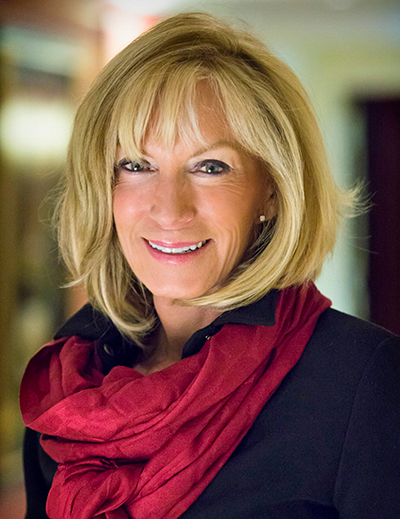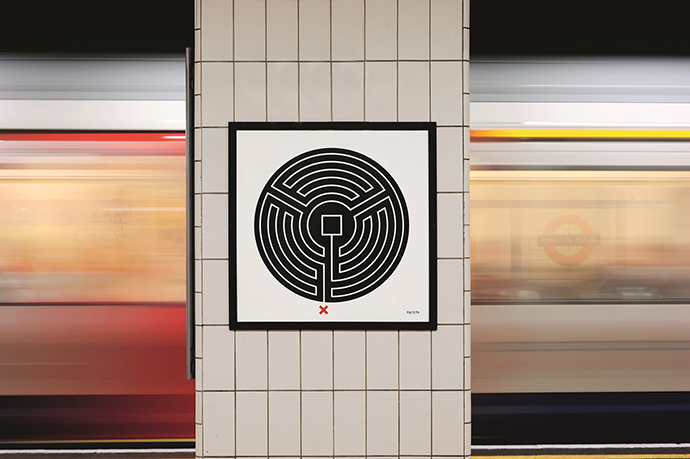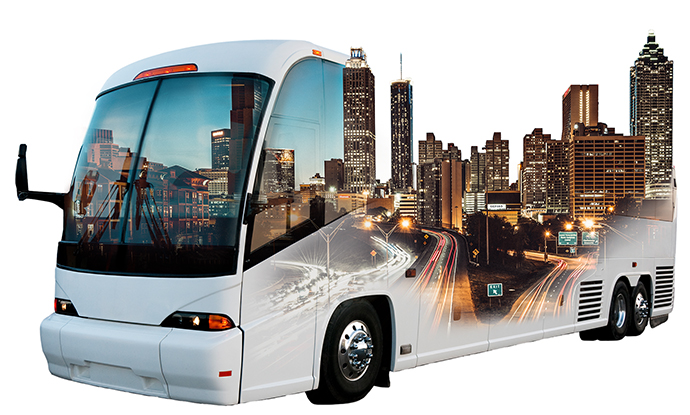New analysis from Transwestern of transit-accessible office buildings in 15 major U.S. metro areas shows average rent in central business districts was $43.48 per sq. ft. for transit-accessible buildings versus $26.01 per sq. ft. for car-dependent buildings, a 65-percent premium that only shrunk to 50 percent in transit-accessible rent in the suburbs (avg. rent: $33.43).
"As workplace amenities have become increasingly important to companies in attracting and retaining talent, tenants are most certainly keeping accessibility to mass transit on their radar when surveying office product," said Brian Landes, director of GIS/Location Intelligence for Transwestern. Defining transit-accessible buildings as those within a 10-minute walk from a subway, commuter rail or light rail facility, the 15-city analysis found that approximately 39 percent of total office inventory was transit-accessible. The combined statistical areas of Denver, New York/New Jersey, Washington, D.C., and the San Francisco Bay Area are rated the highest, with approximately half of the office market’s inventory or greater qualifying as transit-accessible.
Marilee Utter knows those markets well. President of Citiventure Associates in Denver, she advises clients and municipalities on public/private partnerships, urban and transit-oriented development, and organizational strategy. She previously served as executive vice president at the Urban Land Institute, managing ULI’s offices in 75 cities around the world; transit-oriented development (TOD) specialist for the Regional Transportation District (RTD) in Denver; and director of asset management for the City and County of Denver. She’s seen the reports about major TOD projects. From her experience, these grand projects benefit from critical mass, but it’s their ability to remain authentic that matters.

"They’re big, and can bring lots of uses, but it doesn’t guarantee success," she says. "The human scale and experience and authenticity are what people really crave. Bigger is almost sometimes a detriment — it’s hard to create authenticity when everything is brand new and plopped down. These projects always have big budgets, great designers, and they know about connectivity and walkability. It’s just a really hard assignment when leveling everything and building new. Think about your own preference and where you like to hang out — it’s probably not big and glassy and cold, it’s smaller."
Time Over Taxes
Make no mistake, she says: The evidence is overwhelming about the value of TOD real estate and its attractiveness for millennial talent, economic development and job creation. "Connectivity is critical," she says. "It’s a must-have. It’s necessary." It’s just not sufficient. Utter thinks the market is getting more sophisticated, and she points to her hometown for proof.
Denver’s signature infrastructure projects include the growing Denver International Airport, the FasTracks transit investment and the renovation of Union Station. The Regional Transportation District (RTD) FasTracks Program is a multi-billion-dollar comprehensive transit expansion plan to build 122 miles of new commuter rail and light rail, 18 miles of bus rapid transit, 21,000 new parking spaces at light rail and bus stations, and enhance bus service. In November 2017, voters approved seven general obligation (GO) bond measures to back 460 infrastructure projects valued at $937 million, including $431 million for transportation and mobility projects. But you have to bring the big numbers down to specifics to get a real sense of policy translating to place.
"Downtown Denver is long and skinny," Utter explains, about 15 blocks long with high-rises from the 1970s and ’80s at one end. It’s impractical to walk that distance — people normally will walk two or three blocks for lunch, for example. "That’s why the RTD shuttle, which stops at every corner and runs up and down all day for free, is so successful," she says.

At the other end from the skyscrapers is the river, where the old train station, warehouses and contaminated bowery areas were. Today the train station and riverfront are the hot area for mixed use. "The office rents in the riverfront now are in the high 50s, and if you go seven blocks away, the rents are half that," she says. The rents in the historic district are high because that’s where all the ballparks, restaurants, bars and brick buildings are. "What draws people is the messiness," she says, "the human scale. I’d definitely want to be within a quarter mile of a station, but that isn’t enough — you have to look for integrated culture and fabric and placemaking as well."
One reason transit improvements have proceeded in Denver at a fast pace is the city and county decided not to go through the Federal Transit Administration’s process of seeking funds for one train line at a time, getting it up and running, then applying for funding for the next one. "Seven lines take at least 100 years," Utter says, half-joking. "What they figured out through very specific polling was that time was more important to people than money. Getting the system up and running in their lifetime — the ballot said 12 years —was more important to them than taxes. They said, ‘We’ll pay most of the price, so we can get the whole system at once.’ We were the first city in America in decades to do that."
The effort was helped along by a campaign featuring then-Mayor John Hickenlooper (now the state’s governor) jumping out of planes and pulling off other stunts to get the vote out about 15 years ago for what became RTD’s FasTracks, the largest regional transportation initiative in U.S. history.
"Denver enjoys a young population and a progressive view," Utter says. "We love bond issues and infrastructure investment. We’ve had 48 ballot issues since 1989, and only two have not passed."
That doesn’t mean RTD got it all done on time and under budget, and growing pains continue. But it’s close to 90 percent done today. State-level conditions need to be right too.
"You need public-private partnership legislation," Utter says. "You have to have the private sector jumping in. You need a multimodal transportation agency so funding can come through. The last mile is the biggest issue you face with fixed-rail transit. You have to have policies that say, ‘We understand that,’ that in addition to rail, ‘we want roads, we want bikes, we want scooters.’ If your DOT is still focused on highways, that’s a big problem."
That said, even the Colorado DOT understands the future will still have cars, and in cases like the Colorado tourism and logistics lifeline of I-70, the future is not in fixed rail.
"For decades there were studies on maglev or rail to get people to the mountains," Utter says. "Now our DOT has said we’re going to use autonomous vehicles. Even if we could put in a multi-trillion-dollar rail line, it doesn’t solve the last mile" to mountain homes and ski villages.
Modal Models
Asked if TOD is helping attract foreign capital, Utter says, "You’re seeing more foreign capital in the classic core properties" in places such as San Francisco, New York, Chicago and Dallas, and to a slightly lesser extent in second-tier cities such as Denver, Austin and Seattle. But she hastens to add that it’s the overall place that matters first.
"The first thing they look at is the city, and then it’s a question of which properties to look at," she says. "They’ll invest in an office building because it’s next to transit in a good market with good prospects. TOD in a crummy market isn’t going to make up for the crummy market."
So who’s leading the way, and why do so many metro regions make no transit headway at all? Utter says it’s hard not to be impressed with the Chinese systems, even recognizing that their scale and funding are enabled by the national government’s money and structure. "The whole thing is subsidized, and they also subsidize taxis to keep you out of cars because the congestion is so bad," she says, but even so, "I was dazzled by this beautiful system." She also praises the value of the large city scale models on display at welcome centers in Shanghai and many other cities. Ostensibly for tourists, they also serve the purpose of publicly displaying an area’s infrastructure priorities, and showing how those megaprojects fit into an overall picture. "People love to see that stuff," she says, calling it "the most amazing site selection tool I’ve ever seen."
That said, the maglev train to the Shanghai airport was "a nice enough vehicle, but in a horrible location," she says. "Riding it was fun — a big number shows you how fast you’re going. But you’re in the middle of nowhere. So nobody’s perfect."
Most systems and the processes behind them are messy: Gaps in the system can be a direct reflection of multiple transit providers that squabble and never coordinate their schedules. Big projects can drain resources too, in part because old systems such as in Paris, New York or Boston are hard to maintain and frequently break down. "In Boston, the problem is they spent so much on the Big Dig," Utter says. "It was a big success, but the financial overhang has kept them from being able to maintain the system."
Holders vs. Flippers
One factor that can help move things forward is thinking more creatively about parking — or rather, its lack. "I’m kind of appalled at all the parking I see built today," Utter says. Part of the reason is cities are requiring it. They think new building brings congestion and therefore parking is going to solve the problem." Developers shoulder some of the blame too, because they’re only in it for the short term, ready to flip the project to an investor.
"It’s the private equity, long-term holders, not flippers, where we see innovation going on," she says, singling out such organizations as Grosvenor and Brookfield. "When I look at development, one thing I want to know is, ‘Are you a holder or a flipper?’ If you have merchant builders who can’t wait to sell to the pension fund, they’ll just build. Frankly a lot of financial institutions aren’t progressive either, and just take the safe way out."
Sometimes the safe way out means avoiding social equity issues. How much do racial, ethnic and socio-economic prejudice still hold back progress in building out transit infrastructure?
"A lot," Utter says. "Social equity is one of the major goals of transit. Then lots of other good things happen for community redevelopment. You’re always going to have people at a lower income level riding transit. But if there happens to be a racial correlation with that income level, then you get into all that emotional stuff. Dallas had a horrible time. St. Louis. Atlanta just can’t get their arms around it. Even Austin can’t get behind transit. I think it’s a big issue."
Utter says those looking for signs of progress in a community should look for signs of a complete system, including efficient bus routes with ridership across socio-economic levels. Many cities calling on her expertise to help get new fixed rail have broken bus systems with solely low-income or little ridership, "but somehow they expect they’re going to have a great train system," she says. "It doesn’t usually work that way."
Site seekers should look at how much innovation is happening from the private sector. Again, she finds a great example in Denver: "We just got the motorized scooters, and they’re running all over downtown," she says. "I love it. So we have skateboarders, motorized scooters, real scooters, bicycles — it’s a mess, it slows everybody down, and it works much better."
Yes, the key to speeding up transit progress might just be slowing things down to that authentic neighborhood scale. And getting used to the fact that transit projects, like the congested commutes they’re meant to eliminate, just take a while.
"So much of my work has been infrastructure," Utter says. "It just takes so damn long. Once it’s there, people think it’s always been there, and they love it."

